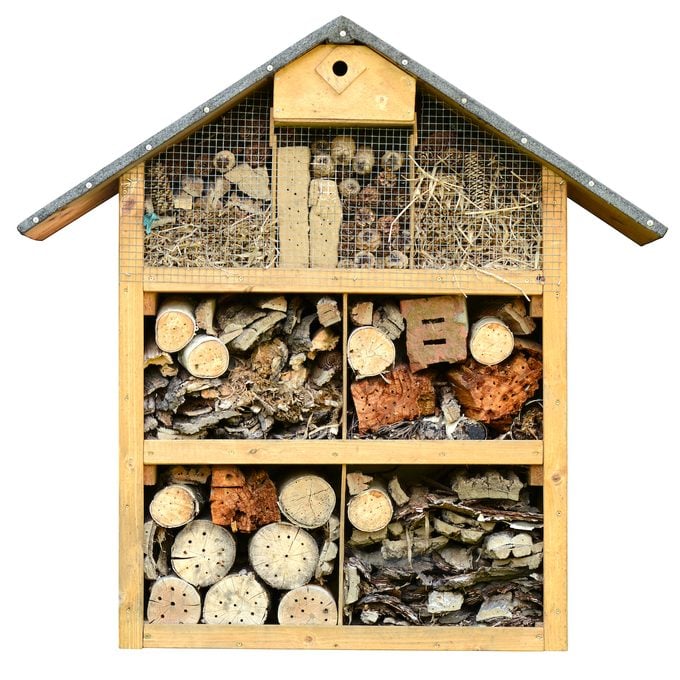How to Build a DIY Bug Hotel
Updated: Mar. 21, 2024
Learn how to create a DIY bug hotel where your beneficial backyard insects can put all six feet up and recharge their batteries.

How to Build a Bug Hotel
Supplies
- Wooden frame
- Plywood
- Nails
- Wood glue
- Sandpaper
- Exterior paint
- Drill
- Rope
- Twigs, bark, grass and leaves
Instructions
Step 1: Build a wooden frame in any shape, such as a rectangle or hexagon. The frame should be made out of natural or recycled components. Make sure it’s deep enough so that you can add materials later—at least 3 inches should do the trick. If you don’t want to build one, look for something to recycle. Try an old wooden drawer or a deep picture frame. A sturdy roof will keep the materials mostly dry.
Step 2: Secure a plywood backing to one side of the frame with nails and wood glue. If the recycled frame already has a back, skip this step.
Step 3: Sand the frame and cover it with two coats of exterior paint. Choose a color that suits your backyard or complements the plants in the area where you plan to hang the bug house.
Step 4: To form a hanger, drill two holes in the frame, thread a rope through the holes and tie the ends together to form a knot.
Step 5: Fill the frame with natural materials. Stuff twigs, bark, grass and leaves into the bug hotel until it’s full. Create plenty of small crevices for insects to hide and nest.
Step 6: Hang it and wait for your first guests! Bug house benefits pest-eating insects and pollinators move into these houses to nest in the summer and hibernate in winter. Check out super fragrant flowers that pollinators love.
How to Attract Insects to a Bug Hotel
Straw and pine cones host beneficial hoverflies. Sticks and logs help ladybugs, since they spend winter underneath the pieces. Cavities attract hibernating carpenter bees. Chunks of wood with drilled holes are ideal for overwintering mason and leafcutter bees. Bark shreds provide a home for beetles, spiders and millipedes. Learn about beneficial bees you want in your yard.
Where to Place a Bug Hotel
Place your hotel on a post or tree about 3 to 6 feet off the ground, preferably facing the south or southeast. This keeps the hotel warm on chilly days, allowing bees and other pollinators to go about their business. Discover 10 things you didn’t know about ladybugs.




















